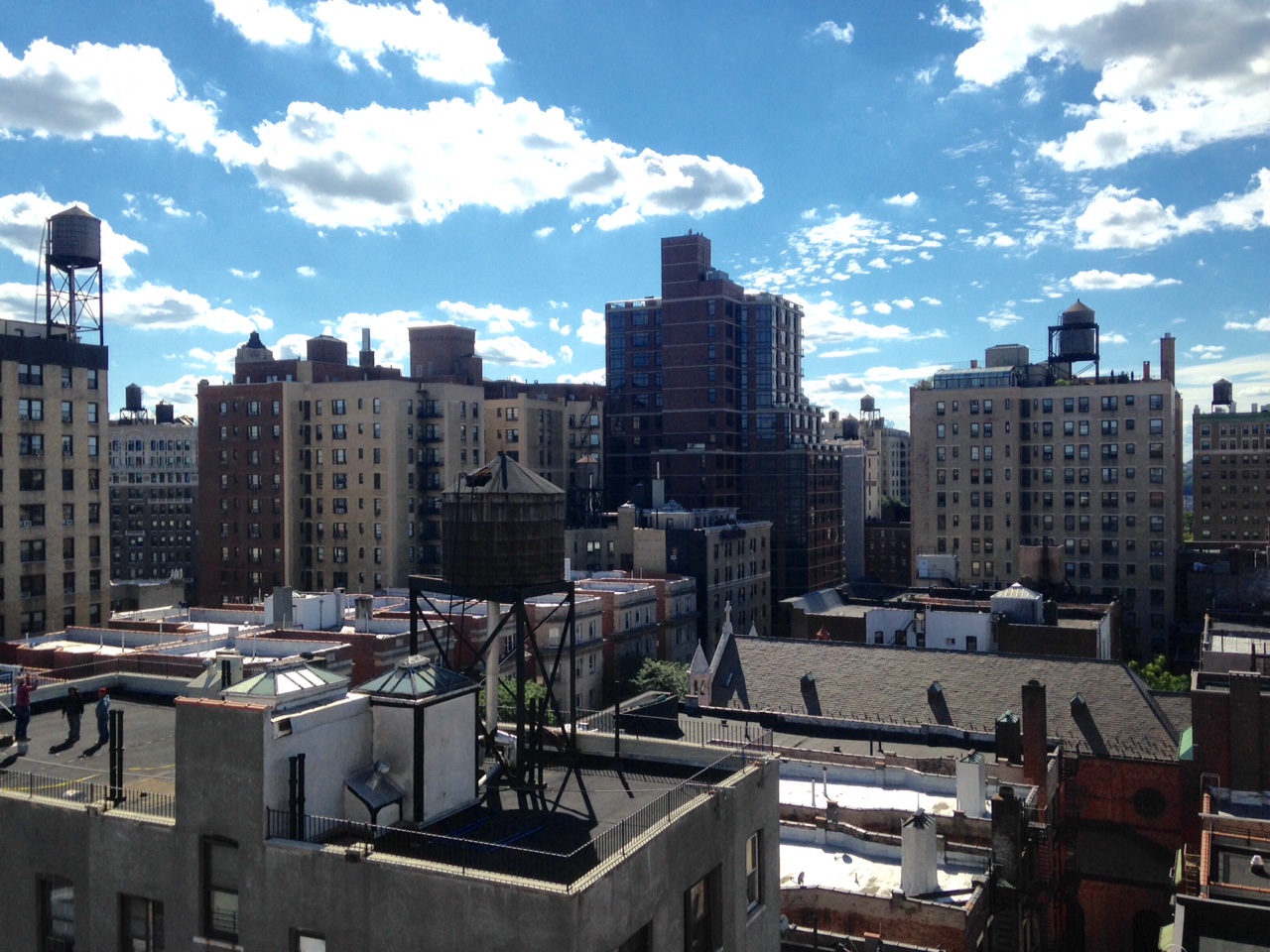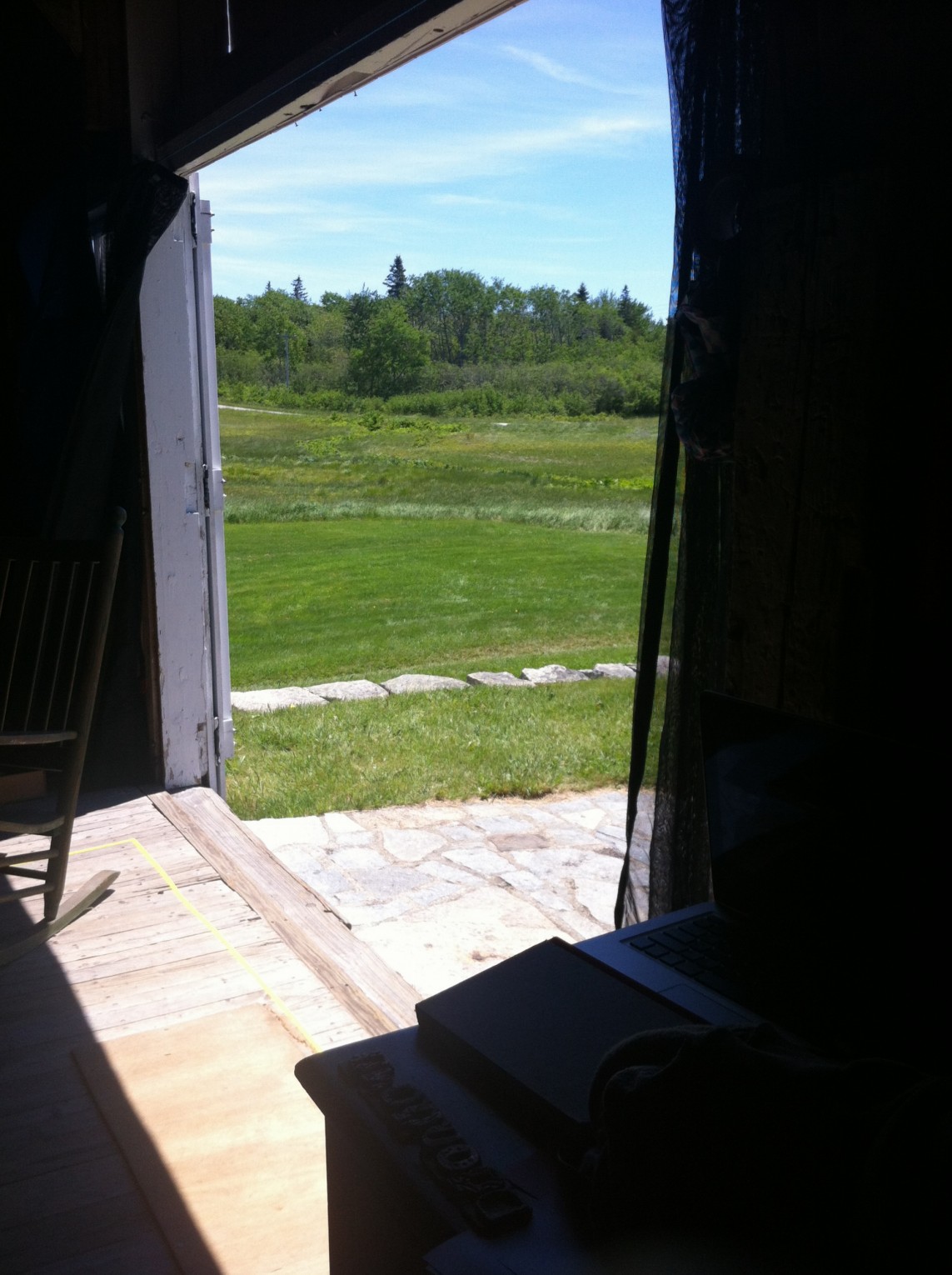
Reflections on Productive Counter-Production after Two Weeks of Productive Counter-Production
Intro: I went to the Vinalhaven Poor Farm to collaborate with some of my favorite DesignInquirers on a book project to which we are all steadfastly committed, but which we never manage to get onto the front burner. After two weeks, the damn thing still isn’t cooked but we managed to set it to simmer. We didn’t make a lot of content: we didn’t even settle on a table of contents; but we picked up a working title and sometimes that’s half the battle. We did some other stuff, too, and somewhere between New York and Los Angeles and Portland and London, there’s a swarm of DesignInquiry aphorisms waiting to colonize a manifesto. But the progress we made on our so-called Provisional Edition was only a small part of the work accomplished during two weeks of productive counter-production. That’s probably oxymoronic, but that’s why productive counter-production makes sense as a DesignInquiry project. And now, after two weeks, DesignInquiry has given me a new frame for understanding productive counter-production as ongoing, open-ended personal and professional work.
(1) What I remember most about writing my dissertation was not writing my dissertation. Not writing wasn’t about getting distracted and procrastinating; not writing was about constructing a thoughtful approach to the act of stepping away from the work. Thoughtfully not writing sometimes meant vacuuming the apartment or washing the windows; it frequently meant going for a run or walking the dog; it occasionally involved making puff pastry or ratatouille. But no matter the activity, the goal was always to make not writing a deliberate practice. That kind of alternative practice became the spirit of productive counter-production for me. In the 17 years since I finished my dissertation, I’ve engaged in all sorts of productive counter-production, major and minor, epic and quotidian, including three marathons, two cross country drives, a few hundred pies, and more pounds of fresh pasta than I can remember. Alongside all of that not writing of the productive counter-production kind, there accrued a whole lot of writing and editing and peer reviewing of the normative productive production kind. To me, this meant that productive counter-production was not only productive in itself, as an autonomous accomplishment; it was also productive in a causal way: counter-production stimulates [normative] production.
This dialectical relationship between production and counter-production made perfect sense to me, though I began to realize that distinctions between production and counter-production were becoming less clear with each completed project. This was true whether the project was construed as normative production or its supposed antithesis, and it emerged in ways that challenged my original distinction between writing-as-production and non-writing-as-counter-production.
(2) After I attended my first DesignInquiry gathering, my relationship to writing began to change. Trained as an architectural historian, I had long viewed writing as a scholarly enterprise or, more precisely, as a means of transmitting the ideas produced by research and embedded in scholarship. Through (and thanks to) DesignInquiry, my writing became more clearly and critically a practice in itself, with its own inherent value (both creative and intellectual) regardless of eventual publication. “No bad miles,” a long held runner’s mantra, became a newly conceived writer’s incantation, “no bad words,” and I took to blogging, i.e. writing for a weblog as the OED defines it, as a form of productive counter production. That’s important enough to repeat: after years of not writing as productive counter-production, for the first time, I was writing as productive counter-production. This was surprising enough, but then something else happened.
(3) As my professional commitments multiplied, with priorities shape shifting and deadlines turning into moving targets, the act (and the activities) of counter-production became increasingly normative, in that I began to deliberately step away from the Capital W work by turning to other Capital W work, just not the Capital W work that it made the most sense to work on at that particular moment. If I should have been finishing a chapter of my book manuscript but was, instead (for example), editing a large body of micro-essays for an online publication, then the editing, even though it is a normative form of production for a scholar, became productive counter-production. This collapsed what little critical distance remained between production and counter-production. If you prefer the fancy explanation, here was the synthesis that resolved the dialectic. But productive counter-production had one more lesson to offer.
(4) Though my conceptualization of productive counter-production gradually expanded to include diverse writing and scholarly practices, I never relinquished those original “not writing” forms of productive counter-production. Quite the opposite, in fact: I have come to understand [fill-in-the-blank-with-anything-from-making-yogurt-to-dog-grooming] as not insignificant dimensions of an intellectual and creative practice. In this sense, productive counter-production has shifted from dialectical opposition to critical continuum. Bruce Nauman’s realization about his own practice comes close to capturing this idea: “If I was an artist and I was in the studio, then whatever I was doing in the studio must be art. At this point art became more of an activity and less of a product.” And at this point, after two weeks of doing nothing but practicing productive counter-production—through writing, editing, cooking, running, etc. etc. etc.—the activities mean as much as the outcomes because sometimes the activity is the outcome.



